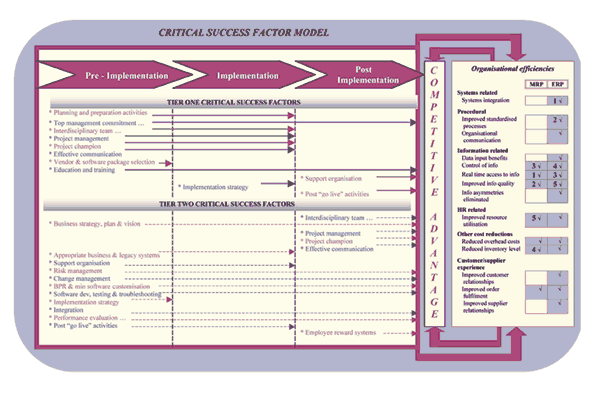| 2004 |

|
YEAR BOOK |
Limerick Institute of Technology
|
The development of a unified Critical Success Factor Model for implementation of Resource Planning Software
|
The model developed partitions the implementation effort according to three stages � pre-implementation, implementation, and post implementation. These stages help companies maintain focus right throughout a lengthy project.
Twenty CSFs are identified and partitioned according to these stages. They are categorised according to tier 1, or most important factors, and tier 2 factors of lesser importance. Certain factors pertain to only one stage, others pertain to two, while others span all three stages of the implementation effort. The model indicates the initial stage where the CSF becomes relevant, as well as the other stages, if any, to which it pertains.
The model proposes that adherence to the three stages identified can be a major stepping stone in a company reaping competitive advantage from their ERP system. It recognises that competitive advantage is derived at a point in the lifecycle, post implementation, where the combination of CSFs that have been addressed in implementing the system work positively towards generating company efficiencies. This combination of benefits contributes to an efficiently run organisation that produces goods and services in a manner superior to its competitors. Therein lies competitive advantage.

Contact: Marian Carcary & Ciara Staunton, Department of Information Technology, LIT;
E-mail: [email protected]